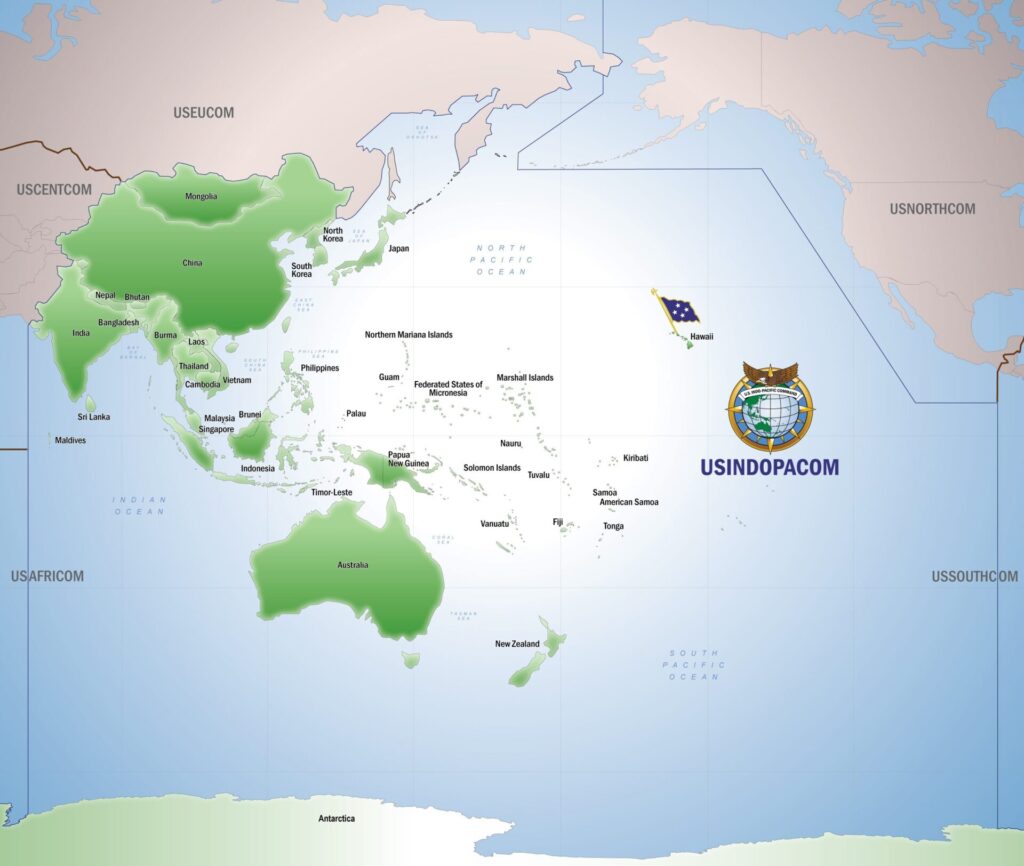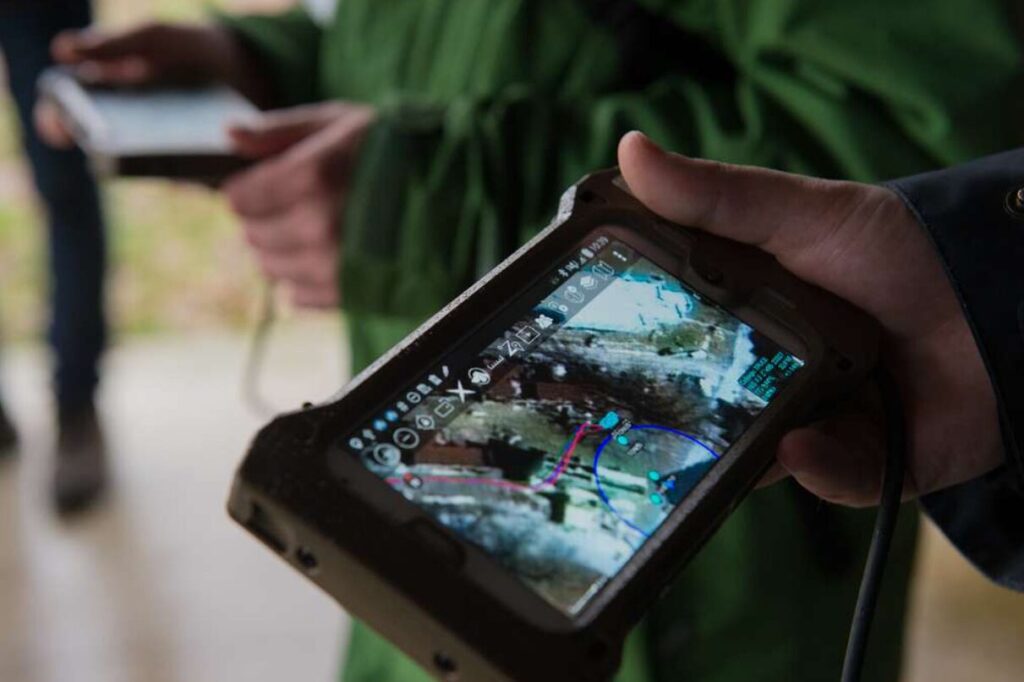Introduction
As global conflicts increasingly shift to urban environments, military forces must adapt to the challenges posed by densely populated and structurally complex settings. For the 24th Marine Expeditionary Unit (MEU), one of the U.S. military’s premier rapid-response forces, mastering urban operations is no longer an option—it is a necessity.
The growing strategic importance of regions like the Indo-Pacific, combined with the rise of near-peer competitors such as China and Russia, underscores the need for specialized training. Realistic Urban Training (RUT) immerses Marines in realistic simulations that replicate the unpredictable and multifaceted nature of urban combat, allowing them to hone skills in navigation, communication, and tactical execution in highly challenging environments.
This report examines how RUT strengthens the operational readiness of the 24th MEU, aligns with the National Defense Strategy, and integrates advanced technological innovations such as artificial intelligence (AI) and unmanned systems to maintain strategic superiority in urban warfare. Through these lenses, we explore how RUT prepares the Marine Corps to confront evolving threats while adhering to the ethical responsibilities that define its mission.

Indo-Pacific military strategy map. Source: www.pacom.mil
The Role of Realistic Urban Training
Enhancing Operational Readiness
In modern warfare, urban environments represent some of the most complex and unpredictable battlefields. Comprehensive and realistic training is essential to maintaining operational readiness. Realistic Urban Training (RUT) immerses Marines in highly detailed, densely populated simulations that mimic real deployment scenarios. These exercises challenge Marines to navigate unfamiliar and intricate urban terrains, preparing them for a wide range of potential threats.
Urban patrolling skills are essential for maneuvering through constrained spaces such as narrow alleyways, multi-story buildings, and underground environments. Combat in these environments often occurs in three dimensions, requiring coordination both horizontally and vertically. RUT ensures Marines master these techniques, becoming adept at identifying threats from any direction—above, below, or at ground level—allowing them to adapt to the complexities of urban warfare swiftly.
Equally critical is training in rules of engagement (ROE), which ensures that Marines can effectively distinguish between combatants and non-combatants. In densely populated urban areas, civilians are often present, making it vital to minimize collateral damage while maintaining operational effectiveness. RUT emphasizes the importance of situational awareness and decision-making under pressure, enabling Marines to carry out their missions with precision and restraint, even in chaotic environments.
Furthermore, coordination with joint forces is a cornerstone of RUT. Marines must seamlessly integrate with other units, such as Marine Air-Ground Task Forces (MAGTF), to conduct combined operations in urban environments. These exercises foster inter-unit communication and interoperability, ensuring that Marines can work efficiently alongside air, ground, and logistics units—a capability critical to expeditionary warfare, where success often depends on the ability to conduct synchronized, multi-domain operations.
Aligning with Modern Warfare Demands
Urban warfare presents unique challenges, far different from those encountered in traditional battlefield engagements. These environments often become three-dimensional battlefields, where threats can emerge from rooftops, tunnels, or basements. RUT helps Marines develop the spatial awareness and tactical adaptability needed to respond to these dynamic conditions.
Another major complication in urban operations is technological interference. Dense infrastructure—such as high-rise buildings and underground tunnels—can disrupt communications and GPS signals, hampering command and control. RUT trains Marines to overcome these obstacles through alternative communication methods and specialized equipment designed to maintain situational awareness even in signal-degraded environments.
Moreover, the civilian presence in urban areas adds complexity to military operations. High population densities demand careful planning to minimize civilian casualties and disruption to daily life. RUT instills in Marines the importance of balancing military objectives with humanitarian considerations, ensuring they are capable of executing missions with precision and restraint.
By participating in RUT, the 24th MEU is better equipped to address the challenges posed by urban warfare. This training hones their ability to operate effectively in unpredictable environments, where urban terrain, civilians, and technology-related constraints converge to create a highly demanding operational setting.

Strategic Alignment with National Goals
Supporting the National Defense Strategy
The Department of Defense’s National Defense Strategy (NDS) prioritizes preparing the U.S. military for potential conflicts with near-peer competitors, such as China and Russia. These adversaries possess advanced military capabilities, requiring the Marine Corps to be adaptable and technologically sophisticated. RUT directly aligns with this strategic priority by preparing Marine Expeditionary Units (MEUs), including the 24th MEU, to operate effectively in densely populated urban areas where future conflicts are likely to occur.
Urban areas are increasingly viewed as key battlegrounds in modern warfare. Near-peer competitors are expected to contest these urban spaces, exploiting the complexities they present. RUT ensures the 24th MEU is trained to navigate contested urban areas, handling challenges such as tight operational spaces, managing civilian populations, and overcoming technological disruptions.
Additionally, RUT enhances the rapid deployment capabilities of the Marine Corps. As a rapid-response force, the 24th MEU must be able to deploy quickly and operate across a wide range of environments. This flexibility ensures the MEU can respond swiftly to crises, fulfilling its role as a forward-deployed force capable of addressing threats anywhere.

Focusing on the Indo-Pacific Region
The Indo-Pacific region is of growing strategic importance to U.S. national defense. Home to some of the world’s most urbanized littoral zones, the Indo-Pacific is a key hub for international trade and political influence. The National Defense Strategy emphasizes the need for forces capable of operating in this highly urbanized and contested region, particularly as tensions rise with China and its increasing military modernization efforts.
Urban centers along the Indo-Pacific’s coastlines are critical to both regional and global economies. Controlling these urban areas provides strategic advantages, including power projection, trade disruption, and political influence. For the Marine Corps, the ability to operate effectively in these areas is essential for maintaining a strategic foothold in the region and securing U.S. and allied interests.
Given the growing influence of potential adversaries like China, urban warfare proficiency has never been more crucial. By training in RUT, the 24th MEU is better equipped to confront adversaries in urban environments, ensuring the Marine Corps can respond to the challenges posed by modern warfare and near-peer competitors.
Innovations Enhancing Urban Warfare Capabilities
As warfare evolves, the U.S. Marine Corps is integrating technological advancements and modernized strategies to stay ahead. These innovations include leveraging artificial intelligence (AI), implementing Force Design 2030, and modernizing training programs to ensure Marines can operate effectively in complex urban environments.
Integration of Artificial Intelligence
AI plays a pivotal role in enhancing decision-making and operational capabilities. RUT incorporates the following AI advancements:
- AI-Driven Decision-Making: Urban warfare requires rapid, data-driven decisions in dynamic environments. AI systems process battlefield data in real-time, giving commanders enhanced situational awareness and the ability to make more informed tactical choices. AI-powered systems analyze data from reconnaissance drones, surveillance cameras, and sensors to provide a comprehensive view of the battlefield, helping Marines anticipate threats and adjust strategies quickly.
- Advanced Reconnaissance: AI-enhanced drones and ground sensors autonomously navigate complex terrains, offering real-time intelligence without risking personnel. These systems can identify threats, map unfamiliar areas, and distinguish between combatants and civilians, enhancing precision and risk mitigation.

Force Design 2030 Initiatives
The Force Design 2030 initiative is reshaping the Marine Corps into a more agile and technologically advanced force:
- Marine Littoral Regiments (MLR): These specialized units are designed for operations in contested urban and coastal areas. MLRs are equipped with tools such as long-range fires, unmanned systems, and advanced communications. They provide a forward presence in key regions, ensuring rapid deployment and engagement in urban environments.
- Unmanned Systems: Increased use of unmanned aerial and ground vehicles (UAVs and UGVs) represents a major shift toward reducing risk to personnel. These systems are deployed for tasks such as reconnaissance and logistics, enabling safer and more efficient combat operations in urban settings.
Modernized Training Programs
Urban warfare’s complexities require modernized training. The Marine Corps is leveraging simulation technologies and interdisciplinary exercises to prepare for these challenges:
- Simulation Technologies: Virtual Reality (VR) and Augmented Reality (AR) allow Marines to practice urban combat in immersive environments. These technologies simulate high-stakes scenarios, enabling Marines to refine their decision-making and tactical skills in realistic, risk-free settings.
- Interdisciplinary Exercises: Collaboration with allied forces and interagency partners is vital in urban warfare. These exercises allow Marines to practice joint operations, adapting to diverse operational requirements and complex combat scenarios.
Maintaining Strategic Advantages
Staying ahead in modern warfare requires not only tactical superiority but also the ability to adapt to evolving threats. RUT ensures that the 24th MEU remains resilient, adaptable, and capable of maintaining strategic advantages. Focusing on adaptability, information superiority, and ethical operations, RUT equips Marines to handle modern challenges effectively.
Adaptability and Resilience
Urban warfare’s dynamic nature requires Marines to adapt quickly to changing conditions. RUT ensures the 24th MEU can:
- Adapt to Evolving Threats: RUT enables Marines to counter both conventional and asymmetric threats by continuously refining their tactics and strategies. This includes developing methods for clearing buildings, navigating streets, and managing urban complexities.
- Operate Under Adverse Conditions: Urban warfare often disrupts communications and GPS systems. RUT prepares Marines to function effectively, even when technological aids are limited, ensuring operational continuity under adverse conditions.
Information Superiority
Information superiority is vital in urban warfare. RUT integrates advanced data management and AI-driven tools to give Marines real-time intelligence, enabling them to make rapid, informed decisions.
- Enhanced Situational Awareness: Unmanned systems and AI-powered sensors continuously update commanders with intelligence on enemy movements and urban terrain, allowing for faster decision-making.
- Cybersecurity Measures: Urban environments expose military systems to cyber threats. RUT emphasizes cybersecurity training, ensuring Marines can protect communications and data from potential electronic warfare.
Ethical and Responsible Operations
Urban warfare involves significant civilian populations, demanding ethical and responsible conduct:
- Minimized Civilian Impact: RUT teaches Marines to differentiate between combatants and civilians, minimizing collateral damage and maintaining the moral high ground. AI-driven targeting systems increase mission precision, reducing the risk of unintended harm.
- Compliance with International Law: Upholding international law strengthens the Marine Corps’ global standing. Adherence to ethical and legal standards ensures that U.S. operations remain legitimate and morally grounded.
Conclusion
Realistic Urban Training (RUT) is a vital component of the 24th MEU’s readiness for modern warfare. By focusing on adaptability, information superiority, and ethical operations, RUT ensures the Marine Corps remains agile and resilient, prepared to confront complex urban threats. Integrating cutting-edge technologies like AI and unmanned systems, RUT aligns with the National Defense Strategy, ensuring that the 24th MEU is equipped to rapidly deploy and operate in critical regions such as the Indo-Pacific.As warfare continues to evolve, RUT positions the 24th MEU to stay ahead of emerging threats, fulfilling the Marine Corps’ role as the nation’s premier expeditionary force. By prioritizing innovation, precision, and responsibility, the Marine Corps remains a formidable force, capable of safeguarding U.S. interests across all domains.
